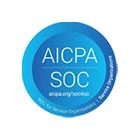Our Blogs
There is a general consensus in higher education that institutions of nearly all types and sizes need to improve persistence and completion rates. While there have been slight improvements in recent years, data indicates that only half of the students complete degrees at the institution at which they start. Studies have suggested that many students complete their degrees at other institutions, taking completion to about 62%. Student departure remains a mystery for most educational leaders. They feel a compelling need to understand and fix the causes of attrition.

There is no shortage of knowledge or reference on what works in student retention. Given all that, it is surprising that rates have only gradually improved. This could be for two reasons. First, institutions are flooded with data points and may not be able to identify the ones that must be tracked or which ones help would explain the persistence patterns of their students. Second, we may lack the connections between institutional supports and students who need them to see if we are truly doing something about it.
Organize the Data Points with a Model
Student success models can be helpful for educational leaders who wish to identify the key aspects associated with student success, persistence and completion. While there are many models to choose from, one of the most talked about is Tinto’s “Theory of Student Departure”. The model helps track the student lifecycle and identifies areas where both student and college attributes can impact the decision to stay in or leave an educational program.
Tinto’s model, when analysed and condensed, suggests that there are five key areas where students may encounter challenges that disrupt their educational careers. Likewise, they may identify areas where students may have strengths that boost their success:
Academic Integration
Academic Integration in a college can be segmented into three parts: preparation, transition, and performance. These three can be connected sequentially, meaning lack of preparation can lead to a poor transition and weak ongoing performance, or they can occur in isolation, disconnected from one another. Experienced faculty and advisors probably know several cases where poorly prepared students were highly successful, well-prepared students failed, and those from both groups realized a trajectory in line with their levels of preparation.
Social Integration
Social Integration addresses the extent to which the student is able to connect with peers within the educational ecosystem. Adult learners often bond with other adults through common programs. The extent to which students have successfully bonded with their peers can be hard to read; it is not usually a one-size-fits-all model of social integration and student information systems are not typically built to collect and report the data that may be associated with this important area of student success. This aspect may also be useful when working on student faculty engagement. This form of social integration in which students feel heard, seen and accepted by faculty is important especially for under-represented groups to feel a sense of belonging at their institution.
Financial Support
Financial Support is critical to enable a student to be able to afford education at that institution.. For those who complete annual aid applications, the resulting calculations serve as a proxy for the ability to pay. The data collected for this purpose does not include factors that can help a student afford costs such as support from family or those that can hamper affordability such as need of a student to work to support a elderly dependent household. We often have a different perception of need-based aid than how students view the issue: the amount of the education bill, less the aid is the amount to be paid or financed. More often than not, it is this bottomline number that impacts students’ real or perceived ability to remain in an educational program. It can also impact the value perception of the educational experience. Is this experience worth it’s price?
Goal Clarity
Goal Clarity indicates the degree to which a student recognises why they are enrolled in certain college, and the end goal of the program being pursued. Certain institutions might assume that a chosen program or subject translates to goal clarity but data often shows that students change subjects two to three times before getting a degree.
A few of the factors that can determine whether a student may have clarity about program they have chosen are its requirements, their personal ability to meet required standards and their practical experience in that field. Faculty and advisors will spot a common situation of students feeling lost when they are unable to pursue a popular program.
Support of Family and Friends
One of the least investigated areas for measuring student persistence is the support of family. As the number of college students grows, the perception of the college experience amongst their friends and families may differ than those who come from families where college attendance is common. However, that does not mean all families don’t support of first-generation students across the board. In fact, many families place high value on college education. Having said that, there may not be an obvious relation between the program curriculum and career, time spent away from class, student services, and the potential of associated programs for providing key career skills.
Create a Framework of Indicators for Lagging
Using these five aspects of higher education as a model, it is possible to establish a data framework that measures what we know about students and their probability to continue and succeed. Lagging indicators are most commonly available data points that reflect things that have already occurred. These include grade point average (GPA), which don’t reveal student successes and struggles with certain concepts and skills. They also include the marks of courses finished in a term, unpaid fees that disallow registration for another term, abandonment of courses midway etc.
While these data may support analysis of past activities, rarely do they provide understanding of current students. For insight that is “current”, institutions need data indicators that reveal outcomes in real time.
Lagging indicator data is important. It allows the institution to conduct detailed, multi- parameter analysis to reveal student groups that may enter into high-risk situations. It may also aid in identifying remedies and support structures to support future students who may have the same characteristics. Too often, these analyses are univariate, such as GPA and one-year retention rate. Even while doing multivariate analyses, the data silos and not sufficient to form regression models with retention values high enough to explicitly establish the differences between students who continue and those who don’t. Human behaviour is complex and is driven by many factors. Consequently, analysis needs to be detailed and based on comprehensive data to allow analysts to investigate multiple factors to understand the patterns of their students.
Leading indicators allow institutions to impact persistence in real time. Awareness of a student not connecting with faculty as expected, assignments, fellow students, lets the institution to intervene and attempt to resolve the issue before the student feels isolated to a degree that compels him/her to leave. Identifying students who have pending program fees within the term, which usually happens because loans applied on parent creditworthiness, have not been approved, allows the institution to intervene and find a solution. The institution can support in bridging the gap and mitigate the stress felt by the student before it becomes overwhelming. These are but a few examples of how leading indicators can be used to impact student persistence.
Identify and Address Gaps
There is typically more data available on lagging indicators than leading indicators, which implies that we have been more attuned to collecting and using data that reflect information on something that already occurred. It must be re-iterated that lagging indicators are help in analysing patterns and suggest interventions for future students. There is far less data available and used as leading indicators, however, and this implies an emerging area of practice that demands more attention.
Analyses need to have robust and comprehensive data, yet those tend to exist in various systems/data silos. Institutions that have data warehouses are one step ahead; identifying the important data and extracting them from those systems may still be a challenge, even with solutions in place. Many other institutions that lack these data tools find themselves wishing for better insights and tools to help them collect, assemble and analyze their data. Certain areas suggest polls or surveys. While there are a number of solutions available today, these can also have limitations.
One of these is the timing of offering a survey to new or current students, when receive the data back and place those into the hands of those who need it (especially advisors). Some of these instruments allow comparisons of student responses at your institution to others, which can be helpful, but that may be outweighed by the timing, where these data then become lagging, not leading, indicators. Short polls, such as those that ask students to rate how they are doing that day with facial emojis, may capture those who are feeling overwhelmed. Longer polls, that tease out the nuances of family and friend support, shouldn’t exceed 10 questions and five would likely increase response rates. Survey overload can be avoided by good planning and timely distribution of short polls and surveys.
Connect the Dots (and the Data)
Collecting, assembling, analyzing and acting upon a robust dataset is an evolutionary process. Institutions should start with what they have and gradually augment and enhance their data and its usage as part of a quality development process. Knowing what the desired state looks like is important to creating a strong road map toward it.
Assembling a robust set of lagging indicators means getting data from multiple systems, modules and tables in to a unified dataset. Once aggregated, data analysis and visualization should reveal the interaction of the data categories within the framework. Human behavior is often complex and more often than not the decision to stay or leave a program is a mix of multiple factors originating from various parts of that experience. And there may be outside factors as well such as childcare, work pressure etc. External factors may be harder to capture through these data collection mechanisms and may not reveal the true picture. A proper assessment of the internal factors within the control of the institution will augment the analysis and sidestep simplistic, one dimensional solutions about why students are staying/leaving.
Assembling and using a robust set of leading indicators is often a tremendous challenge at the most forward-thinking institutions. Is anyone following up to check if any student needs help on unpaid balances? Does the financial aid office, who may be equipped to discuss solutions, even know that this has occurred? Is financial stress causing the student to look for additional outside work, such that they have less time to read and complete assignments? Is the early alert system complicated to use by faculty? Do residence hall advisors have a similar alerting mechanism for issues they might spot? Who is following up on these and what data do they have that will help them facilitate an empathetic and inform conversation with the student before they make a decision to leave?
Adopting a case management methodology to understand student persistence and success has been used by institutions in first-year programs. Some of the more remarkable results have linked students to institutional resources, as well as community services and supports, in a “wrap-around” approach to student success. These approaches can only work when cases are surfaced and those empowered to act have sufficient information to meaningfully interact with the student. It requires that the information from disparate systems is brought together. Improving student outcomes also requires that the care teams and staff can see the relationship between suggesting services and resources and the student’s engagement or lack thereof. Higher education. student support has been based upon a “build it and they will come” approach, as well as an invitational approach to student referrals.
Become a part of the Innovation eco-system
Girikon is a certified Salesforce Consulting Partner with extensive Salesforce Consulting experience. Get access to experts who can help you adapt fast and achieve success. Contact us today.

 +1-480-382-1320
+1-480-382-1320 +44-7428758945
+44-7428758945 +61-1300-332-888
+61-1300-332-888 +91 9811400594
+91 9811400594


















